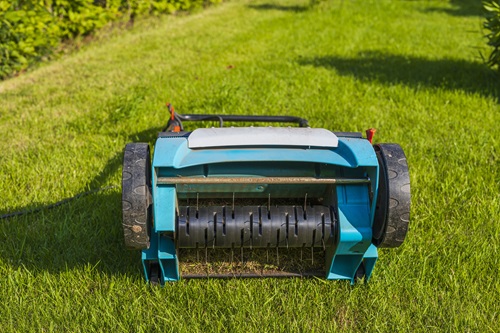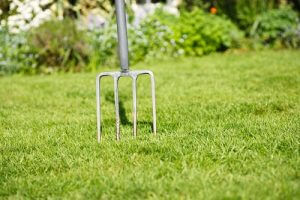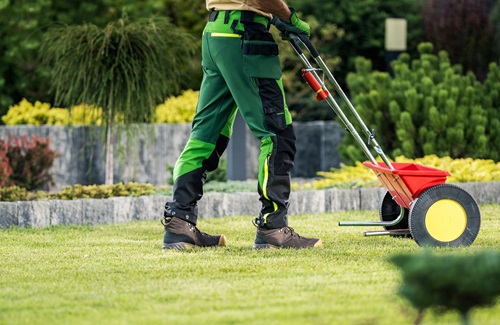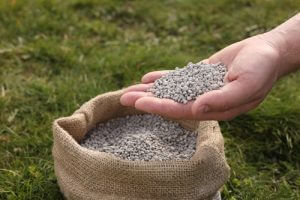
Taking care of your lawn involves a solid weed control plan, and timing plays a major role. Whether you’re trying to prevent new weeds from showing up or dealing with the ones already growing, knowing when to apply weed killer makes a big difference. Although it may seem simple, the timing actually depends on the type of weeds and your local weather conditions.
- Weed Control Starts with Understanding the Seasons
- Apply Pre-Emergent Weed Control in Early Spring and Fall
- Why Timing Matters So Much
- When Post-Emergent Weed Control Works Best
- Be Cautious About Weather and Lawn Conditions
- Know When to Use Weed Control Products Safely
- Protect Yourself
- Build a Healthier Lawn Long-Term
- Keep an Eye on Local Lawn Care Timing
- Pay Attention to Persistent Weeds
Weed Control Starts with Understanding the Seasons
It’s important to understand the growth cycle of weeds. Generally, there are two main types: annuals and perennials. Annual weeds grow in a single season, while perennials return year after year. Because of this difference, your weed control strategy needs to shift depending on what you’re dealing with and when.
Apply Pre-Emergent Weed Control in Early Spring and Fall
Pre-emergent weed control in Conway SC is your go-to if you’re trying to prevent weeds before they even sprout. These products create a barrier in the soil that stops seeds from germinating. Therefore, they work best when applied before you see any sign of weeds.
In spring, apply pre-emergent weed control early—just before temperatures consistently hit 55°F. This timing is beneficial for stopping crabgrass and goosegrass, which tend to pop up in warmer months. On the other hand, if you’re looking to block winter annuals like henbit or chickweed, apply your pre-emergent herbicide in early fall. Targeting them before they sprout’ll save you a lot of trouble later.
Why Timing Matters So Much
Without a doubt, applying weed killer too early or too late can make it ineffective. If weeds have already broken through the soil, then pre-emergent products won’t do much. At that point, you’ll need to switch to post-emergent weed control instead.
When Post-Emergent Weed Control Works Best
Post-emergent weed killers are designed to tackle weeds after they’ve emerged from the soil. This makes them perfect for treating broadleaf weeds like dandelions and plantains. So, if you’re spotting weeds already growing, this is the time to act.
Ideally, apply post-emergent weed control in early spring or early fall in Conway SC. The weather is usually mild during these seasons, which helps the herbicide absorb effectively. For the best results, choose a calm day when temperatures range between 60°F and 80°F. Additionally, make sure there’s no rain in the forecast for the next 48 hours. That way, the product stays on the leaves and does its job.

lawn care in Conway SC
Be Cautious About Weather and Lawn Conditions
Even though post-emergent weed control can be highly effective, applying it in the wrong conditions might cause more harm than good. Avoid using it during extreme heat, especially if temperatures are above 90°F. If your lawn is under drought stress, hold off until it recovers, as the herbicide may damage the already vulnerable grass.
Also, take extra care with newly seeded lawns. Young grass is more sensitive to chemical treatments, which is why you should wait until you’ve mowed the new lawn at least four times before applying post-emergent weed control. This simple step protects your investment and encourages healthy growth.
Know When to Use Weed Control Products Safely
As you’re planning your weed control approach, always check the label of the product you’re using. For example, if your herbicide contains dinitroaniline, it’s safe to use on established lawns. In contrast, if you just sprigged your grass, wait until it has fully rooted before applying any treatments.
For early spring maintenance, pendimethalin-based weed killers are a solid option. Just be sure you’ve already mowed your lawn a few times before using it. If you’re not sure how much to apply, start with 50% of the recommended amount. Then, you can reapply seven to ten days later if needed. This method helps avoid damaging the lawn while ensuring leftover weeds are treated properly.
Protect Yourself
While it’s easy to focus only on the lawn, don’t forget about your safety. Before applying any weed control product, wear protective clothing. Long-sleeved shirts, long pants, gloves, and safety goggles are all essential. These precautions help you stay safe, especially when working with chemical treatments that could irritate your skin or eyes.
Build a Healthier Lawn Long-Term
Although weed control focuses on removing unwanted plants, it’s also about encouraging healthy lawn growth. A strong, thick lawn naturally crowds out many common weeds, so you’re less likely to deal with infestations in the future. Because of this, combining good lawn care practices with weed killer applications can improve your lawn’s appearance and reduce maintenance over time.
For instance, regular mowing, proper watering, and fertilizing all support thick turf growth. As a result, weeds have a much harder time taking hold. This approach not only saves you time and effort but also helps create a lawn you’ll enjoy year-round.
Keep an Eye on Local Lawn Care Timing
Depending on where you live, the right time for weed control might shift slightly. In Conway, SC, for example, spring temperatures can warm up quickly. Therefore, applying pre-emergent weed control early is key. If you’re unsure when to start, a local lawn care service can help you track soil temperatures and identify the perfect window for treatment.
Pay Attention to Persistent Weeds
Sometimes, even with proper timing, some weeds stick around. This doesn’t mean your weed control plan failed—it just means you might need to adjust your approach. For tough, established weeds, a spot treatment with post-emergent weed killer usually does the trick. Additionally, follow up with a second application if necessary.
To wrap it up, the best weed control results come from being proactive and consistent. Applying weed killer isn’t a one-time fix. Instead, it’s part of a broader lawn care strategy. By planning your treatments around seasonal growth patterns, using the right products, and paying attention to weather conditions, you’ll get much better results.
Sticking to a regular lawn care routine makes everything easier down the road. Plus, the fewer weeds you have this year, the fewer you’ll deal with next year. Call Conway Lawn Care Service now.
Like our Facebook page for more information.
Conway Lawn Care Service
Conway, SC 29526
843-353-2259
http://conwaylawncareservices.com
Areas Served: Carolina Forest, Myrtle Beach, North Myrtle Beach, Conway, Surfside Beach, Forestbrook






